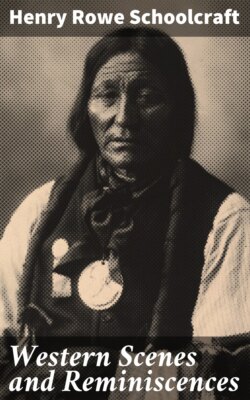Читать книгу Western Scenes and Reminiscences - Henry Rowe Schoolcraft - Страница 7
На сайте Литреса книга снята с продажи.
PRELIMINARY REMARKS.
ОглавлениеTable of Contents
Very little, it is conceived, is necessary to enable the reader to determine the writer’s position on the extreme south-western frontiers, in the year 1818. He had spent the summer of that year in traversing the mine district, which extends along the right bank of the Mississippi, between the mouth of the Maromeg and the diluvial cliffs south of Cape Girardeau, extending west and south-westward to the sources of the St. Francis. In these mineralogical rambles, which were pursued sometimes on foot, and sometimes on horseback, or wheels, he made acquaintance with many estimable men, amongst whom he may name the Austins, father and son, the late Col. Ashley, John Rice Jones, Esq., and many others who are still living, by all whom, his object in visiting the country was cordially approved and encouraged, at all times. He also became acquainted with practical miners, and persons of enterprize who were not only familiar with the settled frontiers, but who had occasionally penetrated beyond them, into the broad expanse of highlands, now geographically known under the term of, the Ozark Chain. Geologically considered, the mine country is but the eastern flanks of this chain, which extends flush to the banks of the Mississippi, and has its terminus in that elevated range of mural cliffs, which form so striking and often picturesque a display, between St. Genevieve and St. Louis. There was, at the time, a general apprehension felt and expressed, by hunters and others who had penetrated those wilds in quest of deer and buffalo, or of saltpetre-earth in the limestone caves, of the predatory tribe of the Osages,—a people who had for years enjoyed the bad reputation of being thieves and plunderers. All concurred, however, in the interesting character of the country extending in a general course, south-westwardly, from the junction of the Missouri with the Mississippi. He felt an ardent desire to penetrate this terra incognita. He could not learn that any exploratory journey had been made towards the Rocky Mountains, since the well known expeditions of Lewis and Clark, up the Missouri, and of Lieut. Pike, across the upper region of the Arkansas, to Sande Fe and Chihuahua. Breckenridge had subsequently published an account of a trip to Council Bluffs.[2] But neither of these routes crossed the wide and mountainous tracts referred to, or gave any definite information respecting them. Viewed on the map, these routes formed the general exterior outlines, but they left the interior filling up to be supplied,—or, if supplied at all, it was too often with such vague phrases as these—“Here are salt mountains.” “The —— is supposed to take its rise here.” “Volcanic hills,” and so forth. The geology of the country furnished no indications whatever of the probability of the latter remark. The kind of pseudo-pumice found floating down the Missouri, in high water, had been stated by Lewis and Clarke, to have a far more remote, and local origin. The description of rock salt, in mountain mass, had long been numbered by popular belief, among the fanciful creations of an exciting political era; and together with western volcanoes, had settled down among those antiquarian rumours, which hold up, as their prime item, the existence of the living mammoth “beyond the big lakes.”
If the writer of the notes and journal which furnish these sketches, was not swayed by any particular theories of this nature, yet was he not free from the expectation of finding abundant materials, in the natural productions and scenery and incidents of the journey, to reward him amply for its perils. He had received from hunters several objects of the mineralogical and geological collection which he made, while living at Potosi, and Mine à Burton: from these wild borders, and, without pretending to estimate the force of each particular object which made up the sum of his motives, he resolved to organize an expedition, with all the means he could muster, and explore the region. The Austins, who had treated him with marked kindness and attention, from the hour of his first landing in Missouri, were then preparing to make their first movement into Texas, and held out to him a fine theatre for enterprise; but it was one not suited to his particular means or taste. He recoiled from the subtlety of the Spanish character; and is free to confess, that he deemed it a far more attractive latitude for the zea maize and the cotton plant, than for those pursuits which led him to prefer the more rugged eminences of the Ozarks. They, in the end, founded a republic, and he only made an adventurous journey.
Having thus recalled the era and the motive of the following sketches, the purport of these remarks is accomplished.
New York, 1844.
